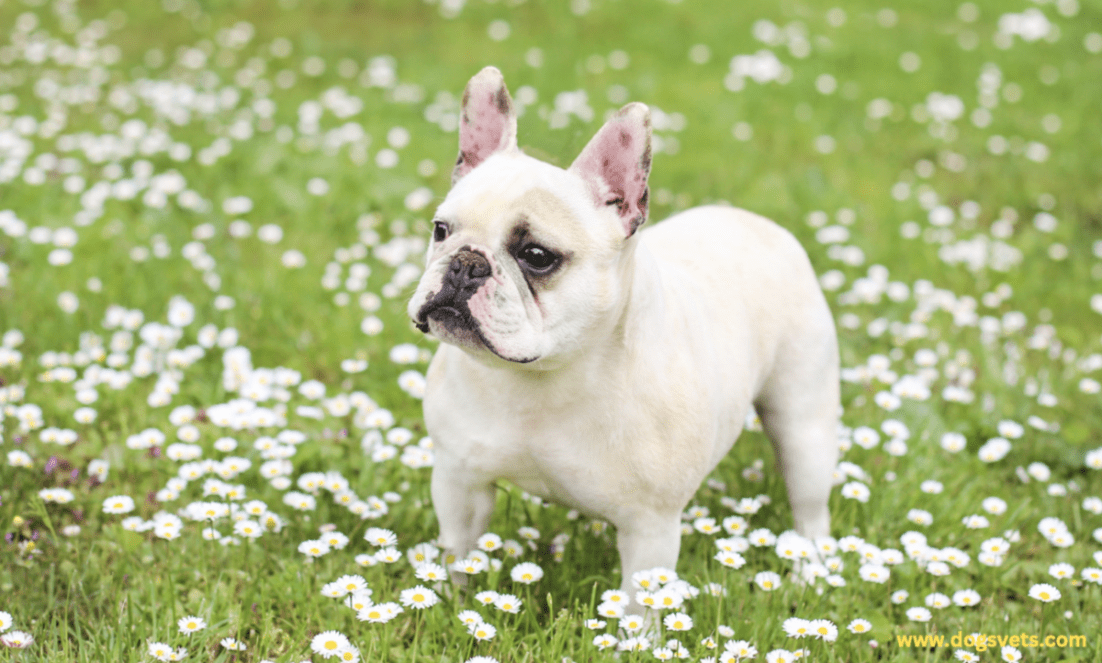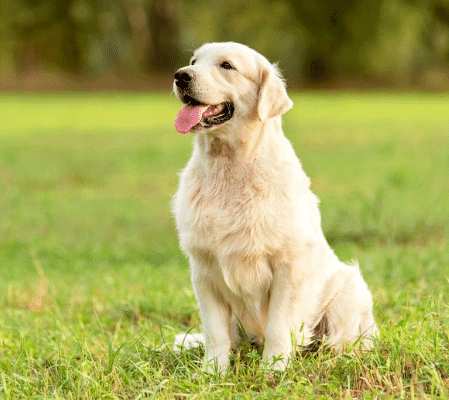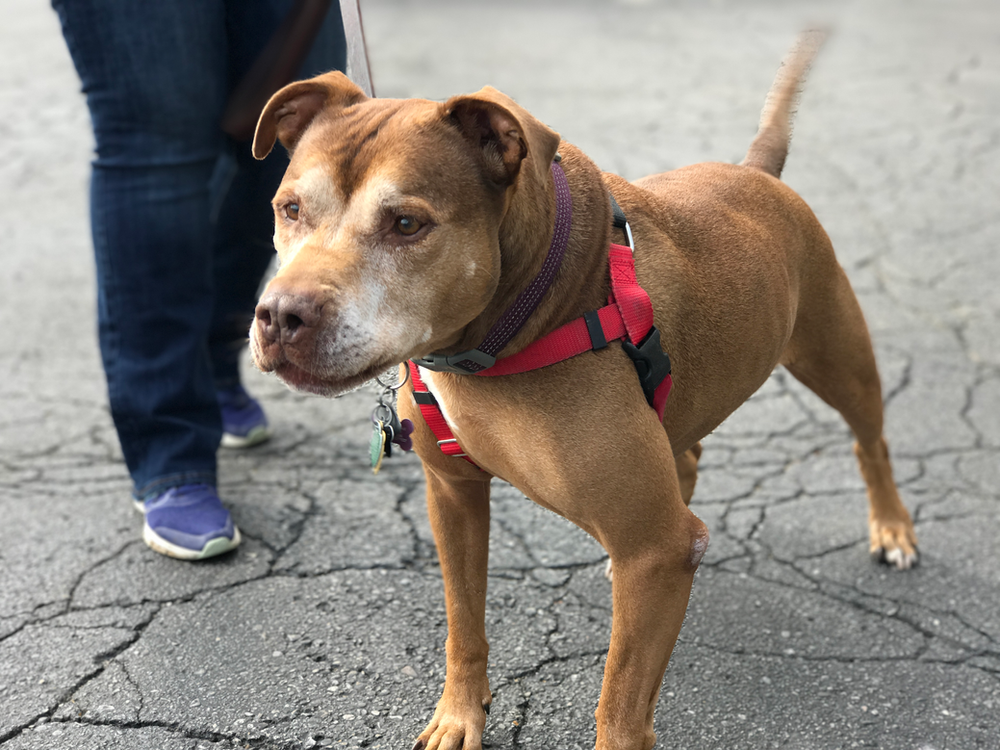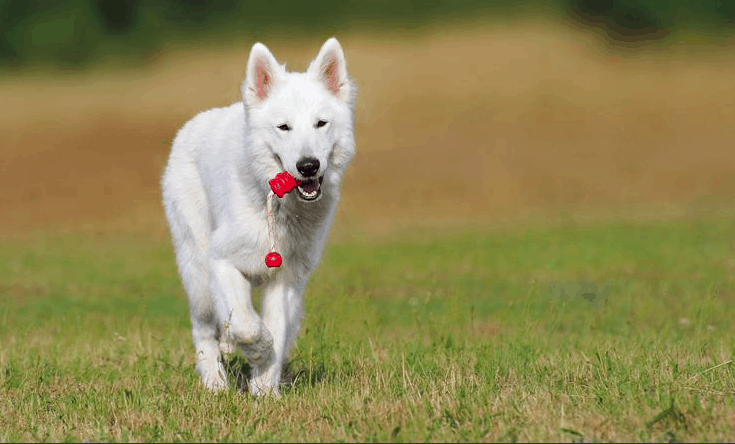Dog behavior
Top 10 best dog breeds for Seniors and Retirees + How to care for old dogs

Last Updated on April 13, 2023 by Dogs Vets
The best dog breeds for seniors
Dogsvets.com has compiled a list of the top 10 best dog breeds for seniors. These rankings are based on the American Kennel Club’s 2019 popularity rankings and were selected based on an independent study of dog breed and personality traits.
Dogs provide love and companionship to millions of Americans. Canine companions live in more than 43 million households.
Despite all the benefits that come with owning a furry friend, dogs are a big responsibility.
There are also the expenses of grocery and vet bills, training and playtime, and behavioral and obedience training, which are all factors that might discourage some older adults from making a commitment that can last a decade or more.
That’s why it’s a good idea for older adults to consider dog breeds that are compatible with their lifestyle.
See also: Most Popular Dog Breeds in 2021
Questions?
- Are you hoping to travel with a senior dog?
- Do you want to stay active and want a dog that can run long distances and hike?
- Do you want a loving companion that is safe with younger family members?
Since neither dogs nor older adults are one-size-fits-all, Dogsvets.com has compiled this list of dog breed options to take into consideration, whether you have a little yard space, time for obedience training, and can occasionally handle shedding and barking.
Dog breeds are ranked based on the American Kennel Club’s 2021 popularity ratings and were selected based on our independent research of breed characteristics.
View this post on Instagram
These types of dogs can be easily be purchased from a reputable pet breeder or adopted from a local pet shelter or animal rescue.
If you are considering getting a dog but don’t know which breed is right for you, then this article will help you make the right decision.
We have compiled a list of the best dog breeds for seniors and retirees in order to help you decide which one is perfect for your needs.
The life expectancy of most of these breeds is somewhere around 12-15 years.
Tips on How to Care For Your Older or Senior Dog?
Caring for your senior dog
The benefits of having a dog as a pet are well known and documented. However, there are some people who might not be able to have one for various reasons. For example, seniors living in retirement homes or those with disabilities.
Older dogs are often overlooked because they are less active and don’t require as much exercise. But just because they’re not as rambunctious doesn‚t mean that they can’t be well-behaved and happy.
Older dogs need to be taken on walks, given soft beds, pampered with treats, and receive plenty of love and affection.
Senior dogs can be just as loving and friendly as any other type of dog, but they need special care because they live longer than other dogs. Here are a few tips on how to care for your older or senior dog:
- Provide a soft bed for them to sleep in.
- Give them a healthy diet that is appropriate for their age.
- Walk them on a regular basis; even if it’s just around the block or in the backyard.
- Provide plenty of love and affection when you’re spending time with your dog.
- Be patient and slow down on task: Elderly dogs need to slow down and take it easy.
A senior dog’s heart beats about one-third slower than a younger dog’s heart.
- Get a slow feeder: because they will be slower in eating: Senior dogs need to eat slowly because their intestines work more slowly than younger dogs’. If they eat too quickly, they may bloat. A slow feeder can help a dog eat more slowly.
Best dog breeds for seniors
Read on to find out which breeds are the Top 10 best dog breeds for seniors.
10. The Pug

The Pug dog breed is known for its wrinkled face, flat nose, and loud snoring. Seniors looking for a relaxed dog that does not require long daily walks would especially enjoy this breed.
Since ancient times, the Pug has been bred as a lap dog; Since then, “companion” has been added to the job description. Pugs are friendly and very playful, and they do not need a lot of grooming. But watch out for those treats.
9. The Havanese dog breed

The Havanese, as the name suggests, originates from Cuba. Its appearance is eye-catching with a silky curved tail and a long coat. This means frequent brushing and grooming, but this 7 to a 13-pound dog can easily be handled by seniors who enjoy spending time with their pet. Havanese should have supervision over children and other dogs, at least initially.
8. Boston Terrier

Described as friendly, bright, and amusing, the Boston Terrier is ranked 21st on the AKC’s list of 194 dog breeds. Their small size is manageable at the end of a leash, and it takes very little to keep them groomed.
Boston Terriers also do well with children who may visit the household, but they are always happiest with their owners curled up in a favorite chair or on the bed.
Best dog breeds for seniors
7. The Miniature Schnauzer

The Miniature Schnauzer is very friendly towards little children and other dogs.
It is also friendly to outsiders, yet the dog is very watchful and barks enough that it is considered an effective watchdog. The Miniature Schnauzer is very easy to train with treats, so as with most small dogs, it is wise to supervise these snacks between meals.
6. The Cavalier King Charles Spaniel

The Cavalier King Charles Spaniel has a silky coat, melting brown eyes, and surprising strength at the end of a leash. This toy spaniel adapts well to the habits of their owners.
Whether seniors and their families are active or at home, this little dog will be happy by their side.
5. The Dachshund Dog

The Dachshund comes in a few sizes and varieties, none of which are designed for running, jumping, or swimming other dogs. Instead, these dogs know how to attack prey or at least bark at them when they have a chance.
Dachshunds make great companions for seniors who may not enjoy running or jumping but want a loyal dog from a familiar and beloved breed.
4. The Poodle

The Poodle is a breed that comes in miniature or standard sizes. This means they can weigh as little as 10 pounds or up to 50 pounds for a female and 70 pounds for a standard male Poodle.
Their curly coats don’t shed much, although most owners keep their coats clipped. Poodles are described as active, proud, and especially smart. They can adapt to almost any older lifestyle, from active nesters to happily retired homebodies.
3. The Golden Retriever

Golden Retrievers can be excellent companion animals for seniors. The breed has an uncanny knack for lifting spirits, so they can ward off boredom or feelings of isolation. They are also easy to train and have an instinctive desire to please.
Seniors older than 70 should consider an adult Golden Retriever, as these dogs can easily reach 12 years or older and weigh up to 75 pounds – and a large, old dog with mobility issues will be a challenge for most 80-year-olds.
2. The french bulldog

The French Bulldog, also known as a Frenchie, is ideal for seniors looking for a cuddly companion who loves attention. They are also adaptable, smart, and loyal, although they are often stubborn. They can be expensive to purchase, as the mother usually has to deliver by cesarean section.
1. Labrador Retriever

The Labrador Retriever is related to the Golden, but as the #1 most popular AKC dog, it certainly deserves its own notice.
Labrador is a family favorite dog breed for seniors looking for a loving dog to keep them active, and for grandchildren who need a tolerant dog that can put up with a bit of tail pulling.
At up to 70 pounds to a male, the Labrador Retriever has a life expectancy of 10 to 12 years.
See also: Can Dogs Eat Cake? 5 reasons you should not feed your dog with cake
Top 5 best dog breeds that are good for seniors
Dogs are a great addition to any family. They provide companionship and security, plus they’re fun too!
The best dogs for seniors are those that are calm and low-maintenance so they don’t get in the way of the senior’s daily routine.
Some dog breeds are good for seniors because they require less exercise, have shorter hair, or don’t shed as much. These breeds include:
The top 5 best dog breeds are good for seniors
1) Beagle
2) Bulldog
3) Chihuahua
4) Cocker Spaniel
5) Dachshund
Questions and Answers
-
Q: What are the top dog breeds for seniors and retirees?
A: Some of the top dog breeds for seniors and retirees include:
- Cavalier King Charles Spaniel
- Poodle (Toy or Miniature)
- Shih Tzu
- Bichon Frise
- Maltese
- Pomeranian
- French Bulldog
- Greyhound
- Lhasa Apso
- Boston Terrier
-
Q: Why are these dog breeds suitable for seniors and retirees?
A: These breeds are generally smaller in size, low-energy, easily trainable, and have friendly temperaments. They require less physical activity and are often affectionate, making them great companions for seniors and retirees.
-
Q: What should seniors and retirees consider when choosing a dog breed?
A: Seniors and retirees should consider factors like the dog’s size, energy level, temperament, grooming needs, and potential health issues. It’s important to choose a breed that fits their lifestyle, physical abilities, and living situation.
-
Q: Are there any health benefits for seniors and retirees who own a dog?
A: Yes, owning a dog can provide numerous health benefits for seniors and retirees, including reduced stress, lower blood pressure, increased physical activity, and improved mental well-being.
-
Q: How much exercise do these recommended breeds need?
A: Exercise needs vary among breeds, but generally, the recommended dog breeds for seniors and retirees require less strenuous exercise. A daily walk and some light playtime should be sufficient to keep these dogs healthy and happy.
-
Q: What are the grooming requirements for these dog breeds?
A: Grooming requirements vary by breed. Some breeds, like the Poodle and Shih Tzu, require regular grooming to maintain their coat, while others, like the French Bulldog and Boston Terrier, have low-maintenance coats that need minimal grooming.
-
Q: Should seniors and retirees adopt a puppy or an adult dog?
A: It depends on individual preferences and abilities. Puppies require more time, patience, and energy for training and socialization. Adopting an adult dog may be a better option for seniors and retirees who prefer a more predictable, settled companion with an established temperament and behavior.
Fact Check
We strive to provide the latest valuable information for pet lovers with accuracy and fairness. If you would like to add to this post or advertise with us, don’t hesitate to reach us. If you see something that doesn’t look right, contact us!
Reference: herald-review
Dog behavior
Train Your Pet Like a Pro: Insider Secrets for Effective Training

Last Updated on June 7, 2024 by Dog Lover
Train Your Pet Like a Pro: Insider Secrets for Effective Training
Effective Pet Training Methods
Hey there, fellow pet lover! Training your pet can be a game-changer for both you and your furry buddy. With the right approach, you can teach your pet to behave like a champ while steering them away from those pesky habits.
Let’s dive into two super effective methods: positive reinforcement and keeping things consistent.
Positive Reinforcement Training
Positive reinforcement is like the magic wand of pet training. It’s all about rewarding your pet for doing something right, making them want to do it again. Think of it as giving your pet a high-five with a treat or a toy.
The trick is to reward them right away—like, within seconds—so they know exactly what they did to earn that reward.
You can use positive reinforcement to teach commands and encourage good behavior. Just be careful not to accidentally reward the wrong actions. Sometimes, you might need to break down the behavior into smaller steps to get the result you want (Humane Society).
Why is positive reinforcement better than other methods? Well, using punishment or negative reinforcement can make your pet scared or anxious, and nobody wants that.
You can use all sorts of rewards—treats, toys, or even just a good belly rub. These rewards help your pet connect the dots between the command and the action (Quora).
For more tips, check out our positive reinforcement training guide.
Consistency in Cues and Rewards
Consistency is your best friend when it comes to pet training. Using the same commands and rewards every time your pet does something right helps them understand what you want.
For example, if you’re teaching your dog to sit, always use the word “sit” and give them a treat right after they do it. This way, your dog learns that “sit” means plopping their butt down and getting a treat.
The more consistent you are, the faster your pet will catch on. It’s like learning a new language—repetition is key. For more training tips, check out our general pet training guide.
So, there you have it! With positive reinforcement and a bit of consistency, you’ll have a well-behaved pet in no time. Happy training!

Training Tips for Your Furry Friends
Every pet has its quirks, especially when it comes to training. This is super true for older and senior dogs, who might need a bit more TLC due to their age and physical limits.
Training Older Dogs
Yes, you can teach an old dog new tricks! Training can keep their minds sharp and spirits high. But, you gotta match the training to their physical abilities.
According to McCann Dogs, older dogs thrive in low-key, low-impact classes like rally, obedience, scent work, or tracking. Agility can work too, but keep jumps and impacts gentle.
Watch their energy levels. Older dogs might still be game for learning and playing, but they tire out faster than the young pups. Overdoing it can lead to soreness or fatigue. Keep an eye on how they respond and tweak the training time and intensity as needed.
Training Senior Dogs
Senior dogs have their own set of challenges, like declining vision or hearing. Adjust their training environment to keep things comfy and safe. Focus on fun and bonding activities that your senior dog enjoys. Avoid stress or demands that could strain your relationship.
Training should be about having a good time together. These golden years can be some of the best times you share. Patience, understanding, and a positive vibe are your best tools for successful training.
For more tips on pet training, check out our general pet training resources. You can also enroll in online pet training courses or pet obedience classes for personalized help from a professional pet trainer.
Tackling Pet Behavior Problems
Training your pet isn’t just about teaching tricks. It’s about understanding their quirks and figuring out how to handle behavioral hiccups.
Let’s chat about two biggies: dominance in dogs and aggression in pets.
Dominance in Dogs
Dominance in dogs is all about who’s the boss in their social circle. Some dogs like to take charge, and this can be influenced by their personality, age, breed, and even the situation they’re in.
But hey, dominance doesn’t always mean your dog is aggressive. Sometimes, it’s just them being a bit stubborn or pushy, a throwback to their pack animal roots.
To keep dominance in check, use positive reinforcement and stick to the rules. If things get tricky, a professional pet trainer can be a lifesaver.
Handling Pet Aggression
Aggression in pets can pop up for different reasons. Maybe it’s a dominance thing, or maybe your pet feels their space is being invaded. Growling or snapping at strangers?
That’s a sign they’re not feeling secure. Building a strong bond with your pet and making them feel safe can nip these issues in the bud.
Common causes of bad behavior? Wrong punishments and inconsistent training. So, make sure you’re using the right training methods and sticking to them.
Patience is key here. Fixing these issues takes time and understanding. For more tips, check out online pet training courses or join pet obedience classes.

Practical Tips for Successful Training
Training your pet can be a blast and a great way to bond. Whether you’ve got a dog, cat, or even a fish, some tips work across the board. Let’s dive into some practical advice for making pet training a success.
Key Commands for Dogs
According to Petmate, the top 10 commands that make life with your dog smoother are: Come, Sit, Down, Place, Stay, Heel, Kennel, Leave it, Drop it, and Watch me.
The secret sauce here is consistency and regular practice. For a deeper look at these commands, check out our basic obedience commands page.
Positive reinforcement is the name of the game. Reward your dog every time they nail a command until they get the hang of it. As they get better, you can ease up on the treats. This way, they associate good behavior with good things happening.
Starting Early and Repetition
Experts say start training in a quiet room with no distractions. Use a clicker if you need to, have treats and toys handy, and decide on your verbal cues and hand signals. Patience and consistency are your best friends here.
For puppies, start as soon as you bring them home. Basic commands like sit and stay can be taught as early as 8 weeks. For adult dogs, start training right away to build trust and make them feel at home.
Repetition is key. The more your pet practices, the better they’ll remember. Combine this with positive reinforcement, and you’ve got a winning formula for shaping your pet’s behavior.
Follow these tips, and you’ll be on your way to a well-trained pet. Whether it’s a puppy, an older dog, a cat, or even a fish, patience and consistency are crucial. Happy training! For more info, check out our general pet training page.
Dog behavior
Long Beach Dog Trainers Taking On Leash Pulling and Reactive Behaviors

Last Updated on June 5, 2024 by Dogs Vets
If your furry friend has some behavioral issues, you are certainly going to be frustrated about it, and overwhelmed with not knowing what to do to get things fixed.
After all, you are not a certified trainer, and you may not have the slightest clue on which actions to take so as to resolve those particular problems. Of course, the approach will depend on the type of problem you are facing, but the one thing that will remain constant is the need for you to hire professionals for this type of work.
Here is an in-depth overview of a common behavioral problem with canines:
As mentioned above, the approach towards resolving the issue will depend on the actual issue. The great thing, though, is that there are professionals out there who can resolve pretty much any problem.
If, for instance, you’re dealing with reactive behavior and leash pulling, you should search for dog trainers in your area that can successfully tackle such issues. And, if you live in Long Beach, you can rest assured that you’ll be able to find what you’re looking for.
Before you begin searching, though, you may want to get answers to some common questions related to reactive behavior in dogs. What constitutes such behavior, what causes it, and can it actually be completely fixed?
Let me provide you with the answers, and then proceed towards helping you connect with Long Beach dog trainers that are taking on leash pulling and reactivity and that can, therefore, be of great help to you.
What Is Reactive Behavior in Dogs?
So, first things first, let me make it clear what reactive behavior really is. In short, it can be defined as an inappropriate and unusual response to normal behavior from other dogs, or people, in public.
Your animal can react to other animals by barking and growling, but it can also react to people the same way, or to any other kinds of stimuli. Whining, lunging and pulling the leash can all be signs of this problem as well. If you want to jump right towards finding a trainer, this article can help.
Now, it is important for you to notice these signs on time and to react as soon as possible, because it is better to work the issue out until it becomes more serious. The good thing is that the signs are quite easy to notice, so you won’t have a hard time identifying them.
Barking, snarling, and growling at other animals or people, nipping other animals when walking beside them, bouncing around trying to get out of their collar, hiding behind you or jumping in your arms, grabbing your clothing and shaking it…
Those are some of the signs you should be on the lookout for, and, as you can see, some are more subtle than others, but they are all pretty obvious and visible when you make an effort to pay attention.

What Are the Causes?
Noticing that your pet is behaving strangely and that it has inappropriate responses to other animals or people is easy. But, understanding why it is doing that may not be easy. There are numerous causes of this problem, and genetics are only a part of it.
A lot of owners assume that it is all genetic, but the truth is that there are other reasons for canines behaving that way and that you can sometimes unknowingly sort of cause the issue by putting them in certain situations that aren’t good for reactive animals.
Apart from genetics, the problem can be caused by lack of socialization. Then, it can also be a response to traumatic events or to anxiety. And, of course, lack of proper training can result in this kind of behavior as well. Understanding the specific cause helps resolve the actual problem.
Can It Be Fixed?
This brings us to our next question. Can the problem actually be resolved? The answer is a big yes! With the right trainers in Long Beach, you will watch your pet become the most well-behaved one in no time.
Hearing out Lisa-Marie Bruce or perhaps some other great pros, you’ll understand that reactive behavior and leash pulling are quite common issues, and that they can definitely be fixed, if you are patient enough and if you hire the perfect trainers.
How to Choose the Right Trainer?
Speaking of, how can you hire the perfect trainers? I have mentioned above already that there are some great dog trainers in Long Beach that can take on this issue and have it fixed for you. But, your task is to research various ones in details, checking their qualifications and certifications, as well as experience and reputation, so as to make the best decision.
Remember to check the training methods as well, and assess the overall quality of the work they are doing. Then, compare everything and make your final choice.
Fact Check
We strive to provide the latest valuable information for pet lovers with accuracy and fairness. If you would like to add to this post or advertise with us, don’t hesitate to reach us. If you see something that doesn’t look right, contact us!
Dog behavior
Understanding Consumer Behavior in the Dog Product Market

Last Updated on May 29, 2024 by Dogs Vets
In 2023, the global market for pet products hit an impressive value of $302.89 billion, showcasing the considerable economic impact and dynamic nature of this sector. Particularly in the realm of dog products, there’s a strong interplay between how consumers behave, brand strategies, and market trends, all propelling this industry forward.
Dogs, often regarded as family members by their owners, claim a significant share of this market with a diverse array of products designed to address their health, entertainment, and care requirements. Understanding these consumer behaviors isn’t just advantageous but necessary for brands seeking to enter and effectively cater to this profitable market.
As we delve deeper into the preferences and buying habits of dog owners, we uncover the intricate motivations guiding their choices and the strategic opportunities these offer for businesses aiming to thrive in this lively industry.
How PR Can Influence Consumer Behavior
Public relations is crucial in shaping consumer behavior within the dog product market. A carefully crafted pet PR campaign holds the power to sway consumer opinions significantly, fostering a positive brand perception that draws dog owners towards a particular brand. In an industry where trust and credibility reign supreme, PR efforts can either elevate or tarnish a company’s standing.
Successful PR endeavors go beyond merely showcasing product advantages and distinct features. They delve into consumer emotions, stressing the importance of pet safety and well-being. This emotional connection, strategically fostered through PR initiatives, cultivates a loyal customer base, which holds immense value in this fervent market.
Social Media’s Impact on Consumer Choices
In the current era dominated by digital platforms, social media significantly influences what consumers buy. These platforms provide a space for brands to promote their products with eye-catching content and direct interaction with consumers.
Along with posting regularly, creating appealing content, and interacting with your audience, it might also be wise to team up with a growth service that knows the ropes of your preferred platform.
For example, if Instagram is your main platform, working with a trusted growth service can help you get Instagram likes, elevate your presence, and grow your follower base. This heightened exposure and interaction can lead to increased sales, as buyers frequently turn to social media for reviews and visual evidence of a product’s worth before committing to a purchase.
Demographic Analysis of Dog Product Buyers
It’s crucial to know the characteristics of dog product buyers to aim marketing strategies accurately. Generally, buyers span across different ages, with a notable number falling within mid to high-income brackets and living mostly in city environments.
These customers tend to prefer shopping online, drawn by the ease and broader range of options. By designing marketing tactics that resonate with these particular traits, companies can attract and keep these important buyers.
Psychographics: Understanding Motivations and Attitudes
Exploring deeper than basic demographics, psychographics delve into the motives, mindsets, and actions of dog owners, shedding light on the reasons behind their purchases of specific canine goods.
A strong emotional bond with pets often guides these choices, steering consumers towards high-quality, health-centric products designed to boost their dogs’ well-being and joy.
The compatibility of a product with the owner’s lifestyle is also key. For example, owners with hectic schedules might lean towards items that save time, such as automated food dispensers or versatile toys. Companies that grasp and leverage these psychological factors can craft effective marketing strategies and product features that strike a chord with dog owners.
Trends and Innovations in Dog Products
Staying current with emerging developments is crucial for maintaining a competitive edge in the dog product industry. Presently, there’s an increased interest in organic dog food, technology-based health-tracking devices, and environmentally friendly toys.
This shift is primarily influenced by consumers’ increasing focus on sustainability and enhanced living conditions, now reflected in how they care for their pets. Companies that promptly adapt to these changes in their offerings not only meet customer expectations but also establish themselves as pioneers in innovation and responsible business conduct.
The Importance of Customer Feedback and Engagement
Customer feedback and engagement play a vital role in thriving within the dog product market. Brands benefit greatly from customer input, which guides them in refining their products and services to align with market demands, ultimately boosting satisfaction and loyalty.
Methods for collecting this feedback encompass prompting online reviews, administering customer surveys, and tracking social media interactions. By attentively heeding their customers, brands can make well-informed choices to enhance their offerings and customer support, thereby strengthening their foothold in the market.
Challenges in the Dog Product Market
Even though there are chances for success, brands in the dog product industry encounter numerous hurdles. Regulatory requirements, intense competition, and a flooded market pose significant challenges.
To overcome these obstacles, brands can explore strategies like targeting specialized markets or expanding their product range to feature exclusive items not found elsewhere. This tactic allows brands to stand out and appeal to particular groups of consumers seeking distinct products.

Final Thoughts
It’s crucial for any brand looking to thrive in the dog product market to grasp consumer behavior. This involves using PR and social media effectively and thoroughly studying demographics and psychographics. Each of these tactics is vital for ensuring that product offerings meet consumer demands.
Furthermore, as the market keeps changing, brands need to adapt their strategies accordingly. Keeping track of consumer preferences and market trends is essential for staying relevant and achieving lasting success in the fiercely competitive dog product industry.
Fact Check
We strive to provide the latest valuable information for pet lovers with accuracy and fairness. If you would like to add to this post or advertise with us, don’t hesitate to reach us. If you see something that doesn’t look right, contact us!
-

 Dog Care Advice3 years ago
Dog Care Advice3 years agoThe Top 9 Best Dog Collars In The Market In 2022 ( Shocking Revelation )
-

 Dog behavior3 years ago
Dog behavior3 years agoTop 25 Most Dangerous Dogs in the World with Photos
-
![Top 100 Best tough names for dogs [Male and Female]](https://dogsvets.com/wp-content/uploads/2021/02/Screen-Shot-2021-02-14-at-8.09.27-AM.png)
![Top 100 Best tough names for dogs [Male and Female]](https://dogsvets.com/wp-content/uploads/2021/02/Screen-Shot-2021-02-14-at-8.09.27-AM.png) Dog Names3 years ago
Dog Names3 years agoTop 100 Best tough names for dogs [Male and Female]
-

 Dog Names3 years ago
Dog Names3 years ago500 Top dog names female – Names that are cute as your dog
-

 Dog behavior4 years ago
Dog behavior4 years agoUnderstanding End-of-Life Signs in Dogs – What dogs do before death?
-

 Dog Names3 years ago
Dog Names3 years agoTop 1000 plus cute names for pets – dogs, cats, male, female and more
-

 Pet Accessories7 months ago
Pet Accessories7 months agoSleepets Dog Tag Tracker Review: Like an Apple AirTag (no subscription)
-

 Trending Dog Stories1 year ago
Trending Dog Stories1 year agoMan Builds a Custom Kayak to Share Aquatic Adventures with His Two Dogs”

![Top 14 Best Dog Breeds for College Students [Complete Guide]](https://dogsvets.com/wp-content/uploads/2022/02/Screen-Shot-2022-02-13-at-1.31.54-PM.png)











